Introduction to Big Data: How Big Data Can Help With Personalized Marketing
 21 November 2023
21 November 2023How well do you know your customers, and are you truly giving them the experiences they desire? If not, Big Data and Personalized Marketing might help you.
Big Data and Personalized Marketing are joining forces to revolutionize the world of business. In today’s hyper-distracted digital landscape, securing and retaining consumer attention stands as the paramount challenge for brands. As someone who has navigated this landscape, I can attest to the transformative power of Big Data and Personalized Marketing in crafting exceptional customer experiences. These are not just buzzwords; they are the secret ingredients to turning each interaction into a standing ovation-worthy performance.
In this article, you’ll discover real-world tips, actionable insights, and a backstage look at how some of today’s savviest brands leverage these two heavy hitters. From Netflix’s binge-worthy recommended content to Amazon’s tempting cross-sells, we’ll unpack how these customer experience all-stars steal the show.
What is Big Data?
Big data is a term used to describe the vast and complex datasets generated by modern businesses, organizations, and individuals. This data can be structured, unstructured, or semi-structured and come from various sources, such as social media, IoT devices, and e-commerce platforms.
To make things easy to understand, picture Big Data as a vast, overflowing toy box filled with different toys. Some toys come with a complete set, like a building block set where every piece has its place—that’s what we call ‘structured data.’ It’s organized and easy to find what you’re looking for. Then you’ve got a jumble of different single toys—like action figures, crayons, and doodles on scraps of paper. These don’t fit into any set; they’re the random things you play with. That’s ‘unstructured data,’ the stuff that’s all over the place. Now, imagine you have some toys that are part of a set but also have random pieces, like a toy car with stickers and drawings. That mix is ‘semi-structured data.’ But where do all these toys come from? Whenever you like something on social media, it’s like adding a small toy to the box. When you use smart gadgets at home, like asking a voice assistant to play a song, you’re tossing in another toy. And when you buy something online? Yep, another toy in the box. Each tiny action adds something different to this massive collection. So, every time you interact online, you’re adding to this giant toy box that companies love to dig through to learn more about what people like you enjoy.
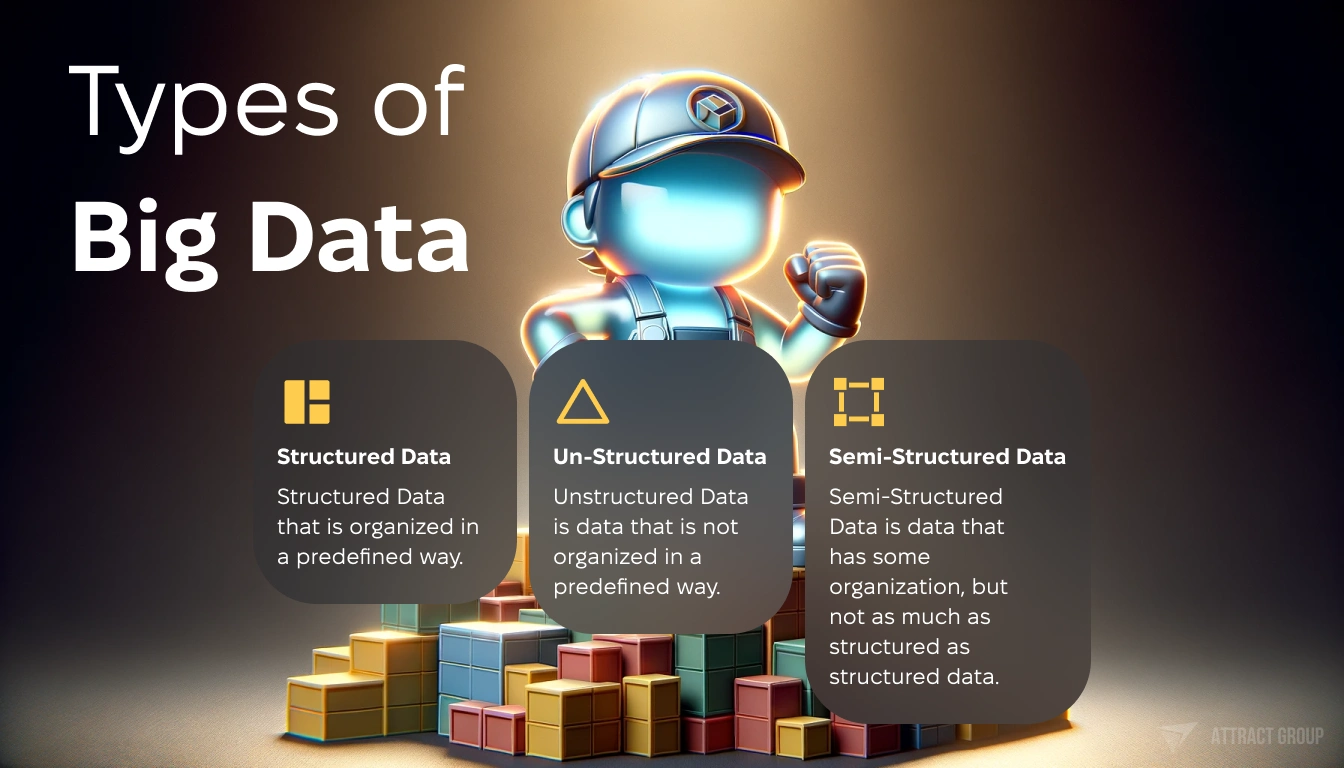
How Big Data Can Help With Personalized Marketing?
Big data can be used to personalize marketing campaigns and increase profit margins. Personalized marketing enabled by big data is the practice of targeting content to specific customers based on data that has been collected about them. This includes their interests, preferences, behaviors, and purchase history. By using this data, companies can create highly customized content that is delivered to customers via email, ads, or other platforms. Personalized marketing is important because it allows businesses to connect with their customers and more effectively reach their target audience. It also humanizes the organization and can drive revenue by sending the right message to the right people at the right time
We can deploy marketing campaigns using big data in businesses in six simple steps:
- Customer Segmentation
- Customer Insights
- Customer Journey Mapping
- Predictive Analysis
- Recommendation Engine
- A/B testing

We start by segmenting our customers into groups based on their shared characteristics, such as interest, demographics or purchase behavior. This allows us to target our marketing messages more effectively. For example, we might create a different marketing campaign for each age group or each gender. We might also create separate campaigns for customers who have recently purchased a product from us or for customers who have abandoned their shopping carts.
Imagine you’re a store owner, and your toy box—the Big Data we discussed—sits in the backroom. Now, you want to ensure every kid who enters your store finds the toy they love. This is how you do that:
1. Customer Segmentation
First, you sort the kids into groups based on what they like—maybe some are into action figures, while others love building blocks. That’s ‘customer segmentation.’ You’re organizing your shoppers to show them stuff they’ll be interested in.
2. Customer Insights
Next, you want to understand what each kid likes. Do they enjoy superhero figures or prefer toy animals? To find out, you look at what they’ve picked up or talked about before in your store. This is ‘customer insights,’ which helps you learn the nitty-gritty details about what each shopper likes.
3. Customer Journey Mapping
Now, let’s discuss ‘customer journey mapping.’ This is like tracking the path a kid takes through your store. Did they stop by the action figures first, linger around the board games, and finally pick up a toy car? Knowing this path helps determine the best places for your most exciting toys.
4. Predictive Analytics
Up next is ‘predictive analytics.’ Imagine you could predict which toy a kid will want for their birthday based on what they’ve liked before. You could have that toy ready and waiting, making the kid and their parents super happy!
Our team of data experts and marketing specialists can help you collect customer data, draw insights, and execute highly targeted campaigns
5. Recommendation Engines
Now, onto ‘recommendation engines.’ This is like having a magic toy elf whispering in your ear, “Hey, if this kid likes toy cars, they might also enjoy this racetrack set.” You can then suggest that the racetrack be set to them, making their visit even more exciting.
6. A/B testing
Lastly, there’s ‘A/B testing‘. This is like setting up two toy displays to see which one the kids flock to more. Do they like it when the action figures are next to the toy cars, or do they prefer them next to the building blocks? By testing out different setups, you learn how to make your store more enjoyable for everyone.

So, using Big Data is like having a magical guide to making your toy store the dream destination for every kid who walks in. You learn so much about what they like and how they shop, which helps you give them a personalized, fantastic experience.
Real-world Applications Between Big Data and Personalized Marketing
Big brands in the business world are already best buds with Big Data and Personalized Marketing.
Amazon
Amazon uses big data to recommend products to its customers. The company collects data about what its customers purchase, browse, and search for. This data is used to create personalized recommendations that are more likely to appeal to each customer.
“Amazon Personalize” is a service that allows creators to develop applications capable of delivering a wide array of personalization experiences, including specific product recommendations, personalized product re-ranking, and customized direct marketing. By recommending various products instead of making customers search through the whole catalog, Amazon can streamline the process of persuading customers to buy.
Amazon does this by collecting around one exabyte of purchase history data from its consumer base, which is used to personalize product feeds and get a general picture of shopping trends and consumer behavior.
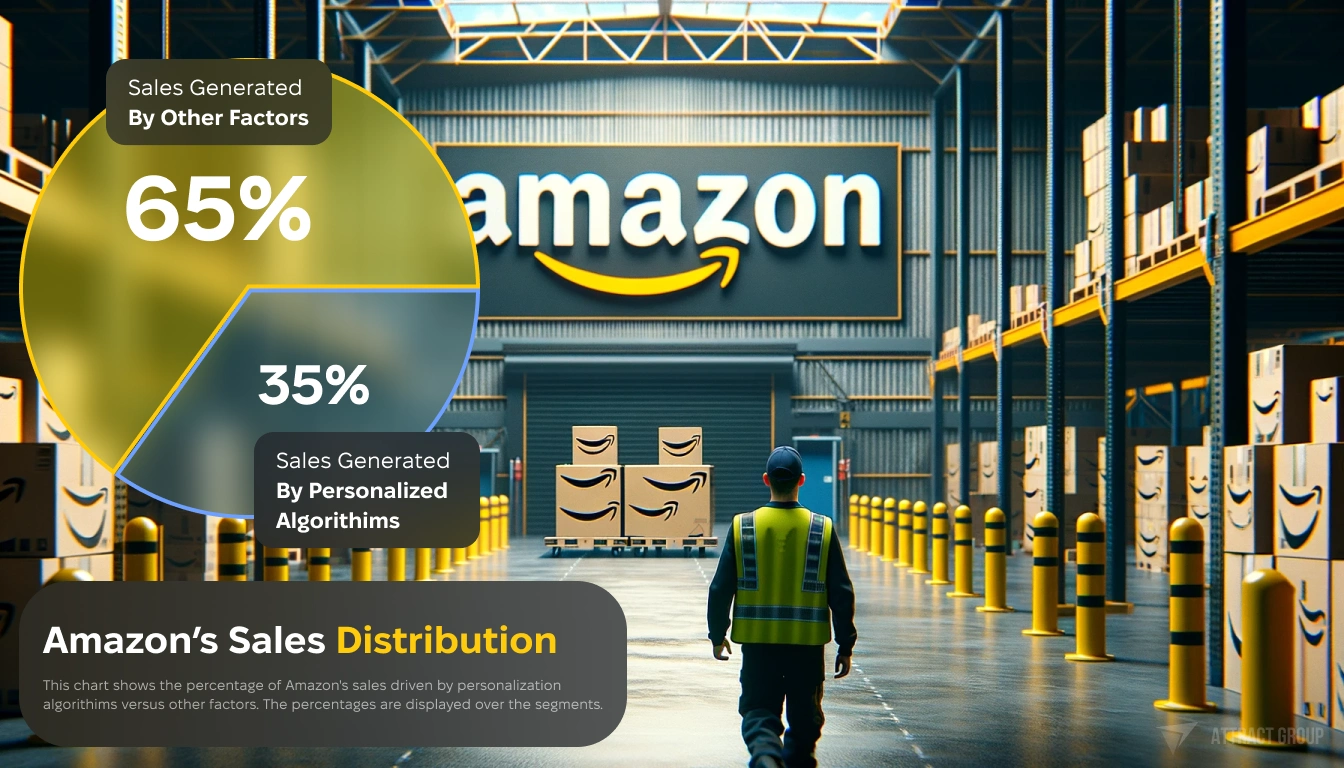
Amazon’s personalized recommendations are an important part of the company’s strategy to combat the overwhelming number of options available to customers. The “Customers Also Bought” section is Big Data and Personalized Marketing working their magic. It’s as if they peek into your shopping cart, see you’ve added a gardening book, and say, “Hey, you might also like this set of organic plant fertilizers!”
According to the AWS Architecture Blog, building personalized recommendations with Amazon Personalize is expected to drive an estimated $62 billion and $68 billion in additional sales in 2024 and 2025, respectively. Have you started to feel the power of personalized marketing yet?
Spotify
Spotify, with its personalized playlists. Like our toy store assistant would know that little Timmy loves trucks and planes, Spotify knows you’re into classic rock but have a soft spot for jazz. So, it creates a playlist mixing both, making your musical journey feel like a kid in a toy store—full of delightful surprises!
According to a study by Scholarworks, 60% of Spotify users listen to personalized playlists. This means that most Spotify users find value in the platform’s personalized recommendations.
Moreover, Spotify’s personalized playlists have been credited with helping to discover new music. A study by MIDiA Research found that 40% of Spotify users have discovered new music through personalized playlists.
Brands like Spotify understand the importance of big data in personalized marketing, take maximum advantage of it, and provide its users top value.
Facebook uses big data to target its advertising. The company collects data about its users’ interests, demographics, and online behavior. This data is used to show users ads that are more likely to be relevant to them.
In 2021, Facebook’s advertising revenue was $115 billion; an estimated 97% of that revenue came from personalized ads. By 2023, Facebook’s personalized ads are expected to generate an estimated $153 billion in revenue. By 2026, the expected ad revenue is supposed to grow up to $203 billion, according to a report by Oberlo.
As digital assumes greater share, data and targeting will likely take on heightened importance in engaging consumers without irritating them amid a crowded digital landscape.
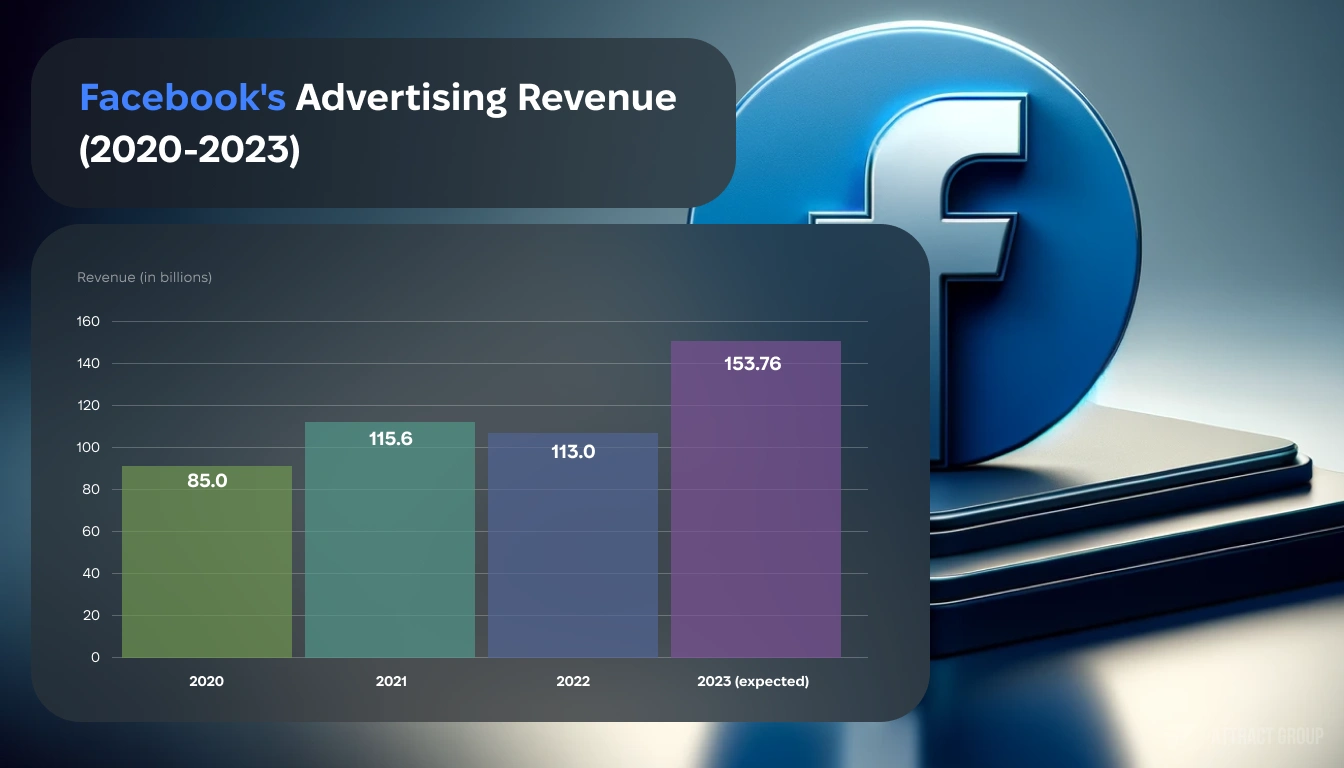
The table below shows how major businesses in the world are using big data for personalized marketing to improve their results.
| Business | What they do with big data and personalized marketing | Results |
| Amazon | Recommends products to customers based on their buying history, browsing, and search data. | Amazon’s net sales increased by 11% to an undisclosed amount in Q2 2023. |
| Netflix | Recommends movies and TV shows to subscribers based on their watch history, ratings, and search data. | Over 75% of viewer activity on Netflix is based on personalized recommendations. |
| Targets ads to users based on their demographics, interests, and online behavior. | Facebook’s ad revenues are estimated at $153.76 billion in 2023, a 13.1% increase from 2022. | |
| Walmart | Tracks customers’ shopping habits and uses that data to improve the in-store experience and target customers with personalized offers. | Walmart’s online sales grew by 24% in Q2 2023, far more than the 6.4% increase in same-store sales, mainly because of pickup and delivery. |
| The Home Depot | Collects data about customer Interactions with its website, stores, and call centres to improve the customer experience. | The Home Depot announced in August 2023 that it remains positive on the medium-to-long-term outlook for home improvement and its ability to grow share in a large and fragmented market. |
Whether it’s helping kids find their dream toy or making your online shopping or music-listening experience a breeze, Big Data and Personalized Marketing are the dynamic duos.
Techniques to Utilize Big Data for Personalized Marketing
Here we’ll learn how to use big data to skyrocket your business growth.
Big data can be used for personalized marketing by collecting data about customers’ interests, demographics, and online behavior.
This data can then be used to create targeted marketing messages that are likely to resonate with each customer. Let’s peel back the curtain and take a closer look at the nuts and bolts of this operation, from gathering the raw materials to putting on the final show.
Data Collection Techniques for Personalized Marketing
These are a few data collection techniques that can be used for personalized marketing.
Remember, the right data collection method for your business will vary based on your goal, who you’re trying to reach, and what you’ve got in your toolkit. It’s not just about collecting nuggets of gold but knowing which nuggets are worth their weight for your unique adventure!
Here are some of the most common types of data-collecting techniques
- Surveys: Surveys are a great way to collect direct feedback from customers about their preferences, needs, and pain points. They can be conducted in many ways, like online, over the phone, or in person. When designing surveys, it is important to be clear about the purpose of the survey and to ask questions that will provide the information you need.
- Cookies: Cookies are tiny text files that get stored on a user’s computer when they surf a website. Cookies can track a user’s browsing activity, such as which pages they visit and the amount of time they spend on each page. This information can be used to create personalized recommendations and targeted advertising.
- Tracking pixels: Tracking pixels are small, invisible images embedded in websites and e-mails. When a user surfs a webpage or opens an e-mail that contains a tracking pixel, the pixel sends a message back to the website or e-mail sender, recording the user’s activity. This information can track user behavior and create personalized marketing messages.
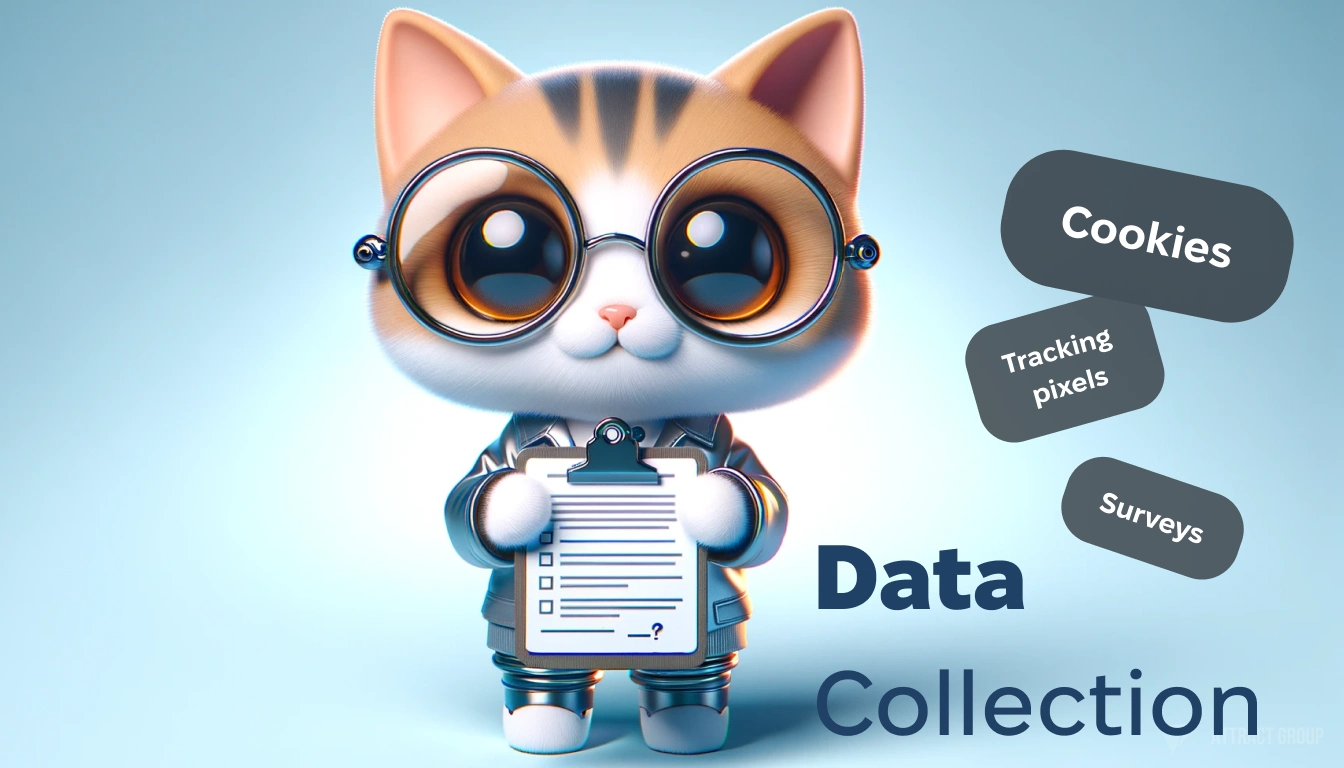
Data Sorting
The next act is data sorting. Imagine we’ve got a big puzzle to solve, but the pieces are all jumbled up. We could try sorting the pieces by hand, which would be tedious and time-consuming. Instead, we can use algorithms and machine learning techniques to sort for us.
These advanced programs are like our backstage crew. They sift through the data, searching for patterns and making sense of customer behavior. It’s like the rehearsal process, where everything is fine-tuned until the performance is pitch-perfect.
Execution of Personalized Marketing
Last but not least, the main event—Execution of Personalized Marketing. This is where the spotlight shines, and the curtain rises. Thanks to automation tools, personalized messages are sent out at the perfect time, like an actor hitting their mark just as the spotlight emerges. And it’s not just about sending out e-mails; real-time personalization strategies help adapt the “performance” in real-time, adjusting offers and recommendations as the customer interacts with a website or app. It’s like improv comedy but backed by data.
Let’s see a comparison of marketing with and without big data:
| Strategy | Without Big Data | With Big Data |
| E-mail Marketing | Generic E-mails | Highly Personalized |
| Customer Segmentation | Broad Categories | Micro-segments |
| Product Recommendations | Based on Popular Items | Individual Behavior Analysis |
Table: Comparison of Marketing Strategies with and without Big Data
Traditional marketing without Big Data is like a play with only one script intended for a general audience. It’s good, but it doesn’t resonate with everyone. On the other hand, marketing backed by Big Data is a personalized performance, fine-tuned to the likes and dislikes, quirks and interests of each audience member. It’s like going from a school play to a Broadway show; the difference is night and day.
Big Data and Personalized Marketing: Challenges and Solutions
In the dynamic realm of Big Data and Personalized Marketing, challenges loom large, akin to formidable mountains on the horizon. Having ventured through this terrain firsthand, I recognize these hurdles and the metaphorical ‘elephants in the room.’ However, rest assured that with experience comes insight, and for every challenge, there exists a solution, eagerly waiting to be unearthed.
Data Privacy
In an age where information is more precious than gold, how you handle this treasure trove of data is critical. Failing to protect customer data is like leaving the vault door wide open; it is unethical and a surefire way to lose trust and tarnish your reputation. So, what’s the game plan?
First and foremost, always follow data protection laws like GDPR or CCPA. Think of these as your trusty guidelines or your rule book for ethical treasure hunting. Second, keep the data encrypted and secure, as if you’re locking it in a state-of-the-art safe. Finally, be transparent with your customers about how you’re using their data. A little openness goes a long way in building trust.
Our team of data security experts can help you implement robust data privacy measures to ethically collect and utilize customer data
Data Accuracy
Another challenge of big data and personalized marketing is data accuracy. The data businesses collect must be accurate to create effective personalized marketing campaigns. Inaccurate or poor-quality data will ruin the harmony of your personalized marketing efforts. However, data can be inaccurate for various reasons, such as human error, typos, and outdated information.
Businesses need to have processes in place to clean and validate their data. This means removing inaccurate or outdated data and ensuring that the data is consistent and up-to-date. To do this:
- Clean and validate your data regularly
- Double-check your sources and make sure they’re reliable.
- Keep your data up to date
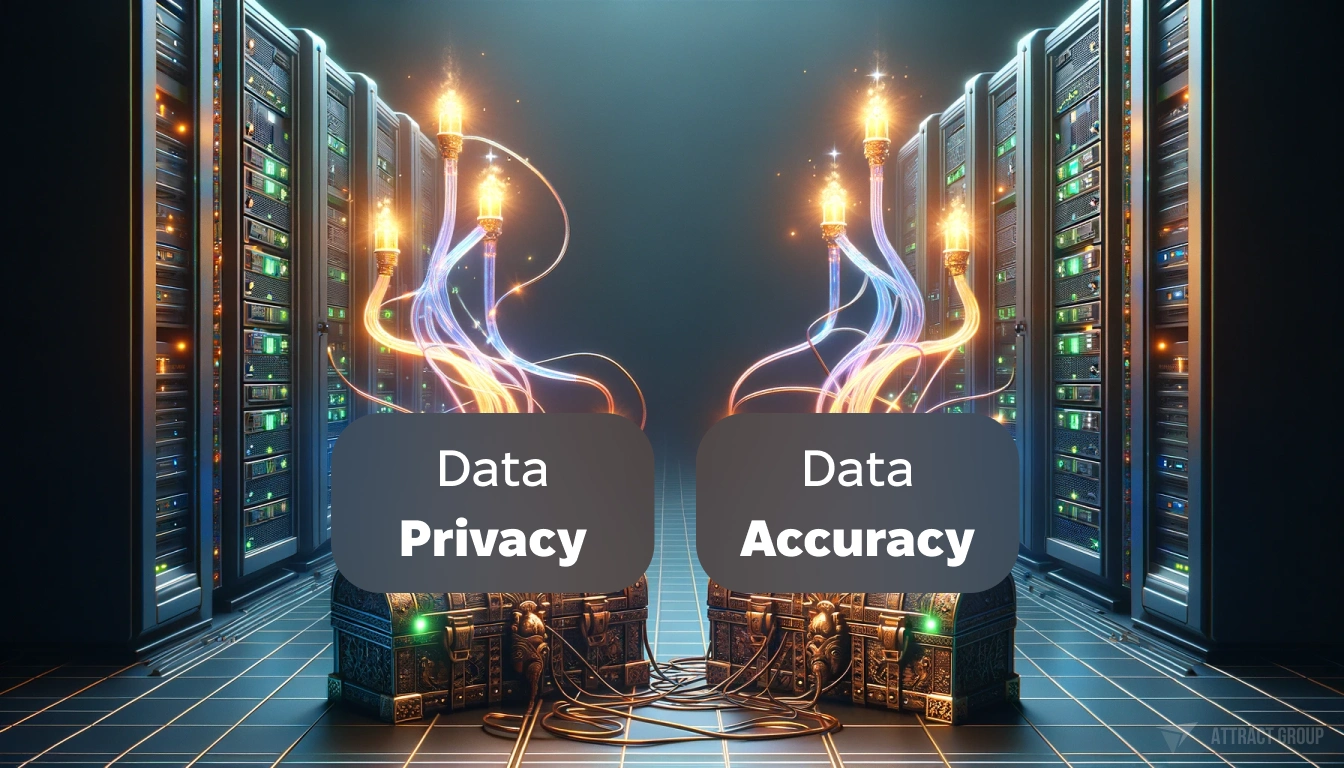
Costs
Setting up a personalized marketing engine based on big data can be expensive. Businesses have to invest in the technology and infrastructure to collect, store, and analyze data. They must also hire data scientists and experts to manage their data and create personalized marketing campaigns.
How to make it worthwhile? The benefits can offset the costs of big data and personalized marketing. Personalized marketing can help businesses to increase sales, increase customer loyalty, and skyrocket their bottom line. For starters:
- Be clear about your objectives.
- Know your aim: higher customer engagement, increased sales, or improved customer loyalty.
- Pick the right tools and technologies that fit your budget and meet your needs.
- The aim is to get the biggest bang for your buck. Implement tracking metrics to measure your ROI over time because the proof, as they say, is in the pudding.
The Future of Big Data and Personalized Marketing
The future of Big Data and personalized marketing is glowing brighter than a Broadway marquee.
Trends in Big Data for Personalized Marketing
Artificial Intelligence is not the fable of science fiction anymore; it’s today’s headline act. Take this—According to IBM, businesses that employ AI-powered personalization can amp up customer satisfaction by a staggering 30%. This means AI isn’t just a whiz-kid of technology; it’s a customer satisfaction powerhouse! Real-time personalization is the new darling of the tech world, making it possible to serve tailor-made experiences as they happen.
The AR and VR technologies have the power to create immersive experiences that make sci-fi movies look like child’s play. For marketers, AR and VR open up a universe of storytelling possibilities, making consumer interaction feel as real as a handshake.
Work with our data science and marketing teams to craft personalized ad campaigns that wow your customers. Let’s discuss your goals
The Future: Would Big Data in Personalized Marketing be a Blockbuster or a Flop?
The future looks promising, but it’s not all sunshine and rainbows. Keeping customer data under lock and key is a real challenge. Imagine you’re the guardian of a treasure chest; you can’t let the pirates get their hands on the jewels! On top of that, ethical personalized marketing is non-negotiable. No one wants to feel like they’re being exploited or discriminated against when they’re just trying to buy a pair of socks online.

With advancements that could give even the most unbelievable sci-fi stories a run for their money, Big Data and personalized marketing’s future looks like a blockbuster hit. There are challenges, but overcoming them is part of the journey, like any good story. With a star-studded cast of emerging technologies and compelling data, the stage is set for a marketing revolution that’ll have us all on the edge of our seats.
Conclusion
The future is here, and the opportunities are endless. To capitalize on this blockbuster potential, brands must embrace data-driven personalization while upholding ethics and privacy as the non-negotiables. With the customer placed front and center, their experience is bound to elicit rave reviews.
The question is not whether to embark on this journey but how fast you can start. Don’t let the competition steal the spotlight. Draw up your plans, rally your crew, and let the magic of Big Data tell your brand’s story like no one else can. Craft personalized experiences that resonate individually, forming lasting connections between business and consumer.









